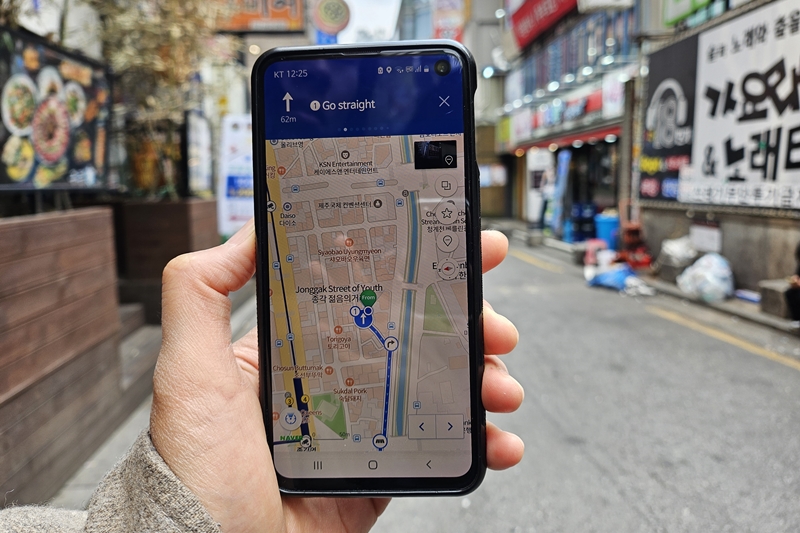- 한국어
- English
- 日本語
- 中文
- العربية
- Español
- Français
- Deutsch
- Pусский
- Tiếng Việt
- Indonesian

The Ministry of Culture, Sports and Tourism and Korea Tourism Organization on March 5 announced the results of a study on the trends and use of leading travel apps. Shown is Naver Map displaying a route to Gyeongbokgung Palace in Seoul's Jongno-gu District. (Cao Thi Ha)
By Cao Thi Ha
Foreign tourists in the country use domestic apps like Naver Map and Papago (translation) along with global apps.
Those who chose to use Korean apps over global ones said they did so because the former are convenient, accurate and up to date since they are specifically designed for tourism in the country.
The Ministry of Culture, Sports and Tourism and Korea Tourism Organization on March 5 announced the results of a study on the trends and use of leading travel apps.
Between October and December last year, the analysis studied 117 leading domestic and foreign travel apps, surveys and interviews on the use of such apps with foreign visitors at the country's leading airports and train stations.
The usage rate of domestic apps by such tourists was 69.4% before visiting Korea and 9.5% after visiting, while the figure for global apps was 99.8% before and 91.6% after traveling.
First, apps used before visiting Korea (multiple responses allowed) were those of online travel sites like Booking.com (27.8%) and Agoda (27%). Social media platforms such as Instagram (22.8%), YouTube (12.6%) and Google (43.8%) also showed high use by foreign visitors.
Tourism records and reviews after traveling were mainly written on leading global social media such as Instagram (45.6%) and Facebook (12.6%).
While visiting Korea, however, foreign tourists said they used both domestic (91.7%) and global (89.9%) apps. Naver Map (56.2%) and Google Maps (33.9%) were utilized for transportation and route finding, Papago (48.3%) and Google Translate (23%) for interpretation and translation, and Instagram (20.2%) for social media.
Over 95% of travelers from Japan and Southeast Asia, those visiting regions outside of the Seoul metropolitan area, and users of city buses and pedestrian paths used domestic apps.
Such apps offer comprehensive information such as precise departure and arrival times of public transportation and exit and platform numbers for the quickest transfers, the ministry said. Thus domestic apps were relatively preferred over foreign ones by tourists who frequently rode public transportation.
The average satisfaction score of apps out of 100 was 89.5, with the figures for Korean (89.8) and global apps (89.3) highly similar. The apps with the highest satisfaction for domestic travel were Naver Map (27.8%), Papago (9.9%) and Google Maps (6.3%).
shinn11@korea.kr